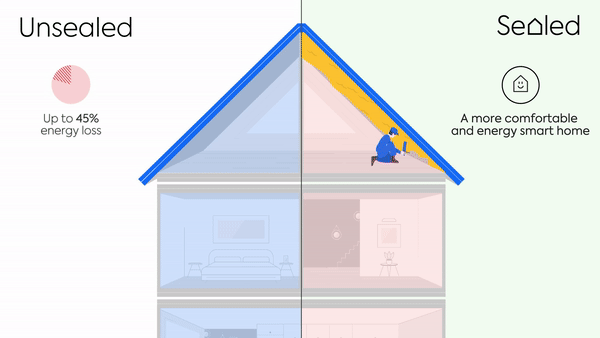Expert Answers to Common Questions About Home Ventilation Melbourne
Wiki Article
Recognizing the Relevance of Home Ventilation for a Healthier Living Atmosphere
Home air flow plays an essential function in maintaining a healthy and balanced living environment. It promotes the exchange of outside and interior air, which is necessary for improving air quality. Without correct air flow, homes can come to be reproducing grounds for allergens and contaminants. The consequences of inadequate air circulation can be significant. This brings up the questions of exactly how home owners can effectively implement air flow techniques to protect their health and wellness and health. Comprehending these methods is important.
The Essentials of Home Air Flow
Home air flow acts as a crucial part of indoor air top quality and comfort. It involves the procedure of exchanging stagnant interior air with fresh exterior air, thereby reducing moisture and controlling temperature. Correct air flow systems can include all-natural techniques, such as open home windows and vents, in addition to mechanical systems, such as exhaust fans and air exchangers. Reliable home air flow helps prevent concerns like interior mold and mildew growth and the build-up of hazardous bits. It likewise improves general energy effectiveness, as well-ventilated rooms can keep comfy temperatures with much less reliance on home heating and cooling systems. Understanding the fundamentals of home ventilation is vital for homeowners looking for to produce a much healthier living environment on their own and their families.
Typical Resources of Indoor Air Air Pollution

Numerous may not realize it, interior air pollution can stem from various resources within a house. Typical contributors include unstable organic substances (VOCs) discharged from paints, solvents, and cleaning items. Family devices, such as gas ranges and fireplaces, can launch damaging gases like carbon monoxide and nitrogen dioxide. Additionally, mold and mildew and mildew grow in moist areas, releasing spores that impact air quality. Animal dander, dust termites, and plant pollen can gather indoors, additional intensifying air pollution levels. Smoking inside your home creates poisonous chemicals that stick around airborne. Developing products, consisting of asbestos and formaldehyde, can off-gas dangerous substances. Recognizing these resources is essential for keeping a healthier indoor setting and advertising effective air flow approaches.
Wellness Consequences of Poor Ventilation
Interior air pollution can have considerable wellness effects, especially when ventilation is insufficient. Poor ventilation can lead to the build-up of harmful pollutants, such as volatile organic compounds, mold and mildew, and particulate matter. This accumulation may result in respiratory system concerns, including bronchial asthma, allergic reactions, and chronic obstructive lung condition. People might experience signs like frustrations, fatigue, and irritability of the eyes, nose, and throat. At risk populations, such as children and the elderly, go to higher threat for serious health and wellness impacts. Long-term direct exposure to poorly ventilated atmospheres can likewise add to a lot more serious conditions, consisting of heart diseases. Ensuring appropriate ventilation is crucial for keeping a healthy and balanced living setting and lowering the danger of health problems linked with interior air contamination.Reliable Ventilation Approaches for Your Home
Proper air flow is important for maintaining a healthy and balanced interior atmosphere, and executing effective strategies can greatly improve air top quality. Property owners can start by ensuring that exhaust followers are set up in kitchen areas and shower rooms to remove excess moisture and smells. Opening windows regularly allows fresh air to circulate, particularly during moderate weather. In addition, making use of air cleansers with HEPA filters can assist record air-borne pollutants. For homes with home heating and cooling down systems, preserving heating and cooling systems and changing filters consistently is crucial for peak performance. Incorporating all-natural ventilation strategies, such as cross-ventilation, can likewise improve air flow. Securing any kind of leaks in home windows and doors avoids unwanted drafts, which can disrupt controlled airflow, eventually leading to boosted interior air quality and convenience.Maintaining Optimum Air Quality Year-Round
To maintain perfect air high quality year-round, home owners need to embrace a positive technique to handling their interior environment. On a regular basis keeping an eye on indoor air quality is critical; this consists of checking for pollutants such as dirt, mold, and volatile natural substances (VOCs) Implementing effective ventilation systems, such as exhaust followers and air cleansers, can considerably minimize airborne impurities. In addition, routine maintenance of cooling and heating systems assurances peak efficiency and air blood circulation. House owners must also take into consideration moisture levels, as too much wetness can result in mold and mildew growth. Seasonal adjustments might necessitate changes in ventilation methods to suit varying outdoor air top quality. By prioritizing these techniques, house owners can develop a healthier space, promoting total health for all occupants throughout the year.Regularly Asked Questions
Just How Can I Tell if My Home Needs Much Better Ventilation?
To determine if a home needs far better ventilation, one must observe signs such as consistent moisture, mold development, musty smells, condensation on windows, or boosted allergic reaction signs, showing poor air flow and possibly inadequate indoor air high quality.What Are the Indications of Poor Indoor Air Quality?

Can Houseplants Improve Indoor Air Quality Properly?
The performance of houseplants in boosting indoor air top quality is debated. While some researches suggest they can take in toxic substances and produce oxygen, their total impact may be very little compared to correct ventilation and air filtering systems.Exactly how Frequently Should I Modification My Air Filters?
The regularity of air filter modifications commonly depends on usage and filter Home Ventilation Melbourne type. Generally, it is advised to change filters every 3 months, though households with animals or allergies might need even more constant changes for perfect efficiency.Are There Any Kind Of Details Air Flow Equipments for Allergic Reaction Sufferers?
Several ventilation systems, such as HEPA-filtered systems, properly lower irritants airborne. Home Ventilation Melbourne. These systems catch family pet, dirt, and pollen dander, giving allergic reaction sufferers with a cleaner, much healthier indoor setting while managing air high quality successfully
It assists in the exchange of indoor and exterior air, which is crucial for enhancing air top quality. Home ventilation serves as a crucial part of indoor air quality and comfort. It entails the process of exchanging stale interior air with fresh outside air, thereby decreasing humidity and managing temperature level. Interior air pollution can have substantial health implications, specifically when ventilation is poor. Proper ventilation is vital for maintaining a healthy and balanced interior atmosphere, and applying reliable approaches can significantly enhance air high quality.
Report this wiki page